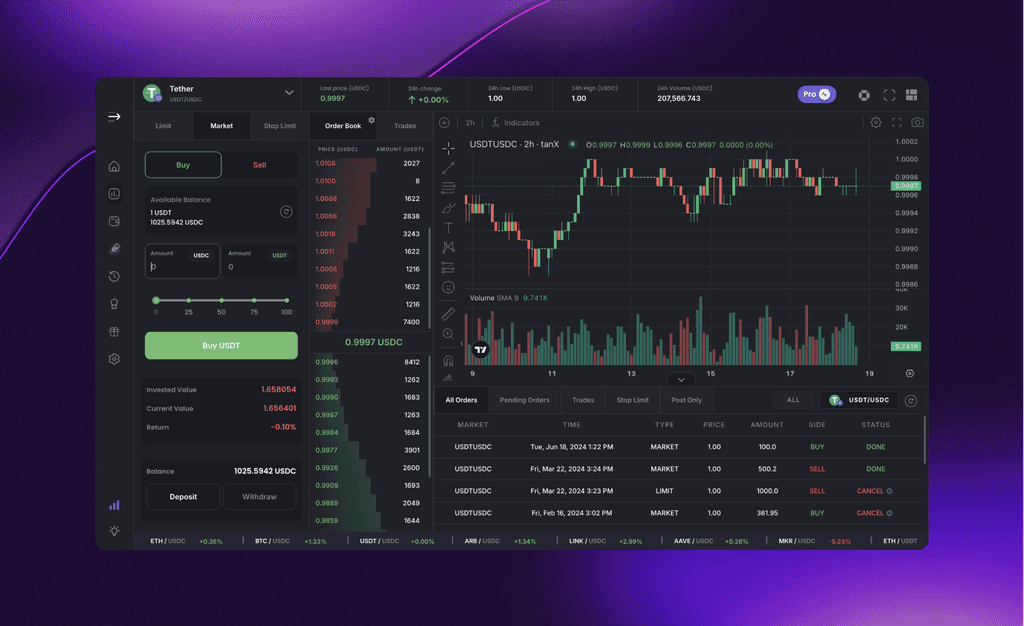
Ram Kumar
Industry
5
min read
Mar 12, 2024
The Dencun upgrade was successfully deployed on the Ethereum Network at 13:55 UTC, 13th March, - 15 minutes later, BOOM!
Ethereum L2 networks reported over 90% reduction in fees; Starknet’s gas fee dropped from around $5 to about 4 cents, according to a tweet from their X (formerly Twitter) handle. And Coinbase reported that the average cost of transactions on Optimism, Arbitrum and Base had dropped to just a few cents.
What is the Dencun Upgrade about?
(Psst! If you’re familiar with the upgrade, skip to the next part where we talk about Ethereum’s roadmap) Basically, EIP-4844 is a mini version of Danksharding, Ethereum’s solution to its scaling problems. EIP- 4844, also called Proto-Danksharding, reduces fees on L2 transactions by attaching temporary data carriers called Blobs to it.
Previously, the way transaction data was stored led to high gas fees because…
Each node was required to store the transaction data individually; the nodes had to constantly increase storage; their profit margins decreased; they increased their mining fee to make up for it.
And in the end, the user bore the burden of high gas fees.
This is where blobs come in; these temporary data carriers allow information from L2 networks to be added to Ethereum without having to store data permanently, thus reducing the burden on the nodes and ultimately reducing gas fee for users.
To celebrate the success of the upgrade, Ethereum developers posted the entire script of the Bee Movie on the network (this is a niche meme trend that originated from Tumblr where the script of the movie was spammed across posts and comments.), and the whole undertaking cost only $14. Another developer even posted it for a far lesser amount of $5 after the fees had dropped even further.
What’s next?
With the Dencun Upgrade turning out to be a success, the team can prepare for the next update. However, before we dive into that rabbit hole, let’s understand what the Ethereum upgrades aim to achieve.
Cheaper Transactions: Ethereum transactions are costly and rely on centralised elements, and this is a hinderance to its adoption worldwide. Hence, making Ethereum completely decentralised and affordable is one of the main objectives for the developers behind Ethereum.
Security: Blockchains are built to be secure, but it is essential to prepare Ethereum to face threats and attacks in the future to ensure the network remains unaffected.
Better User Experience: The user experience of a network is very important; it should be simple, engaging and innovative enough to drive adoption for crypto. Ethereum is under constant development to ensure better User Experience.
Future Proof: The Ethereum network is not a temporary solution, but a breakthrough that aims to last for generations, and the developers aim to equip the network to solve tomorrow’s problems so it can continue to contribute positively to our society.
The Rabbit Hole: The rhyming upgrades of Ethereum
The roadmap is divided into 6 parts, namely
The Merge
The Surge
The Scourge
The Verge
The Purge
The Splurge
We will take a look at each part and briefly explain its objectives and key upgrades. Two things to keep in mind before we dive in:
These parts are scheduled to take place parallelly, not one-after-another.
The upgrades in this list can be changed in the future if the need arises.

Source: Vitalik Buterin’s tweet
The Merge
The goal of The Merge is to make Ethereum ‘an ideal, simple, robust and decentralised Proof-of-Stake consensus blockchain’. And it did with the landmark Merge upgrade that took place on September 15, 2022. However, some minor upgrades from this section are still pending.
The Surge
The Dencun upgrade marks the beginning of ‘The Surge’, and its goal is to enable Ethereum to reach 100,000 transactions per second through rollups. The concepts of Danksharding and Data Availability are key to achieving this; Danksharding is a scaled up version of Proto-Danksharding, and Data Availability Sampling is an efficient way to verify blocks.
The Scourge
The Scourge aims to mitigate the risks involved with Maximum Extractable Value (MEV) and Liquidity Staking and Pooling. Tackling this issue will help Ethereum address concerns of centralisation in its Proof-of-Stake (PoS) system.
The Verge
The whole point of The Verge is to make the process of verifying blocks easier. As time goes on, the network will onboard more and more users, and it should be able to keep up with the traffic demands. Full nodes (capable of verifying a block without assistance) require high amounts of power and storage, hence The Verge aims to enable light nodes (less powerful when compared to full nodes) that demand less power and storage to provide the same results as full nodes through the use of trustless or trust-minimised alternatives (zero-knowledge technology).
The Purge
The Purge aims to simplify the network, eliminate technical debt and limit participation costs. Currently, every byte of data being processed by the network is stored permanently, and this adds to storage costs. The Purge’s key update will delete data that is no longer necessary for forming new blocks (data that is older than a year), and this will lead to an increase in the network’s efficiency. However, this isn’t The Purge’s only goal; it also seeks to increase the system’s accessibility and the user experience.
The Splurge
The Splurge basically seeks to fix ‘everything else’. The updates of The Splurge aren’t high priority, but nevertheless essential for the network. Currently, the biggest update in The Splurge is Account Abstraction, also known as ERC-4337. This allows users to interact with the Ethereum network without possessing their own private keys or having access to Ether to pay for transaction costs.
Connect to the community
Stay updated on our latest activities by following @tanXfinance on X (Twitter) or joining our Discord while we continue striving to perfect the DEX trading experience.
Happy trading!
Get Started with trading on the world's leading insto DEX right away!





